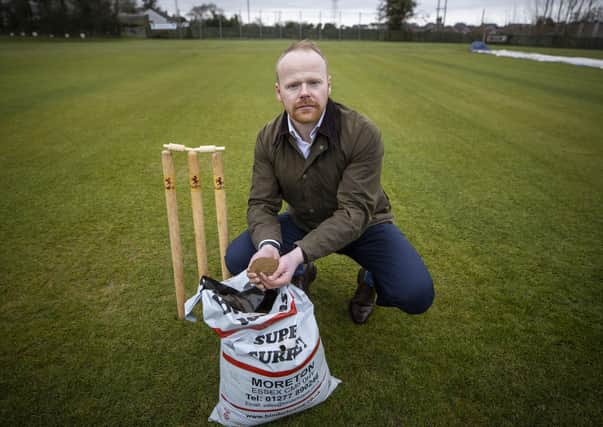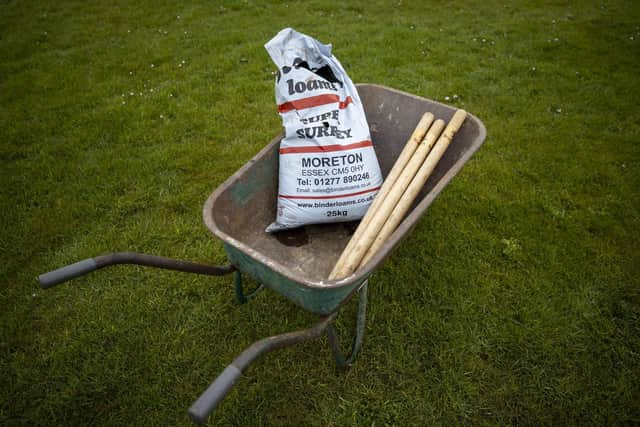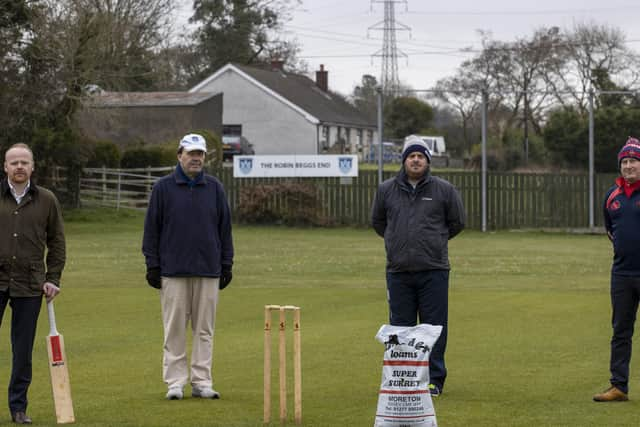Cricket pitch soil used for decades may be dug up and replaced due to NI Protocol


The special clay-containing material known as loam can be obtained from counties in England to give the ball its predictable bounce on the pitch.
Post-Brexit bureaucracy has caused problems for suppliers sending a range of goods from Great Britain to Northern Ireland.
Advertisement
Hide AdAdvertisement
Hide AdCarrickfergus Cricket Club groundsman Michael Kennedy said: “If we do not get this stuff it looks like we are going to have to dig our square up and replace it with something else, and that is going to be a disaster.”


Northern Ireland follows the EU’s rules on trade to prevent a hard border on the island. That has caused problems for suppliers sending goods from Great Britain.
Mr Kennedy said the problem needed to be resolved before renewal work on the surface begins in September.
He warned the pitch could start to deteriorate to the point where it became unsafe.
Advertisement
Hide AdAdvertisement
Hide AdThe loam has to be kept consistent, with the same clay content in the soil, which differs depending what region it is from.


Mr Kennedy said: “There is no alternative, we cannot just nip down to the local merchant and buy a bag of this.
“I have been involved in cricket for 15 years and it is what other generations have used before.
“There is no alternative, so we are sitting here at the moment trying to work out what we can do.”
Advertisement
Hide AdAdvertisement
Hide AdThe Protocol has prompted a backlash from unionists who believe it threatens Northern Ireland’s integral place in the UK internal market.
Stormont Ulster Unionist Assembly member John Stewart is a critic. He is a keen cricketer and plays in the Carrickfergus club’s second 11.
He said: “What we are seeing here is another example of the sledgehammer to crack a non-existent nut of the Protocol and of the EU.
“There is no threat whatsoever to the EU single market or to EU health standards from the age-old importing of loam to settle cricket pitches.
Advertisement
Hide AdAdvertisement
Hide Ad“It seems completely farcical to me that up to now there has been no solutions to this.”
Uel Graham, cricket operations manager for the Northern Cricket Union (NCU), said not having loam available created a “far-reaching” problem at all levels from international down to schools.
He said: “If they are not able to prepare and maintain pitches, that would mean pitches may need to be replaced more often, which is a very costly aspect.
“Covid has already had a major impact on clubs with a truncated season last year, so any additional financial burden is something clubs would find very difficult.”
Loam is used to create consistent bounce and pace.
Advertisement
Hide AdAdvertisement
Hide AdMr Graham said: “Without loam that would have a detrimental effect on pitches, ultimately that would lead to a safety issue, with bowlers now becoming faster and then having an impact on batters and safety.”